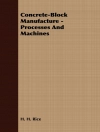This book explains the complete loop to effectively use self-tracking data for machine learning. While it focuses on self-tracking data, the techniques explained are also applicable to sensory data in general, making it useful for a wider audience. Discussing concepts drawn from from state-of-the-art scientific literature, it illustrates the approaches using a case study of a rich self-tracking data set. Self-tracking has become part of the modern lifestyle, and the amount of data generated by these devices is so overwhelming that it is difficult to obtain useful insights from it. Luckily, in the domain of artificial intelligence there are techniques that can help out: machine-learning approaches allow this type of data to be analyzed. While there are ample books that explain machine-learning techniques, self-tracking data comes with its own difficulties that require dedicated techniques such as learning over time and across users.
Daftar Isi
Introduction.- Basics of Sensory Data.- Feature Engineering based on Sensory Data.- Predictive Modeling without Notion of Time.- Predictive Modeling with Notion of Time.- Reinforcement Learning to Provide Feedback and Support.- Discussion.












